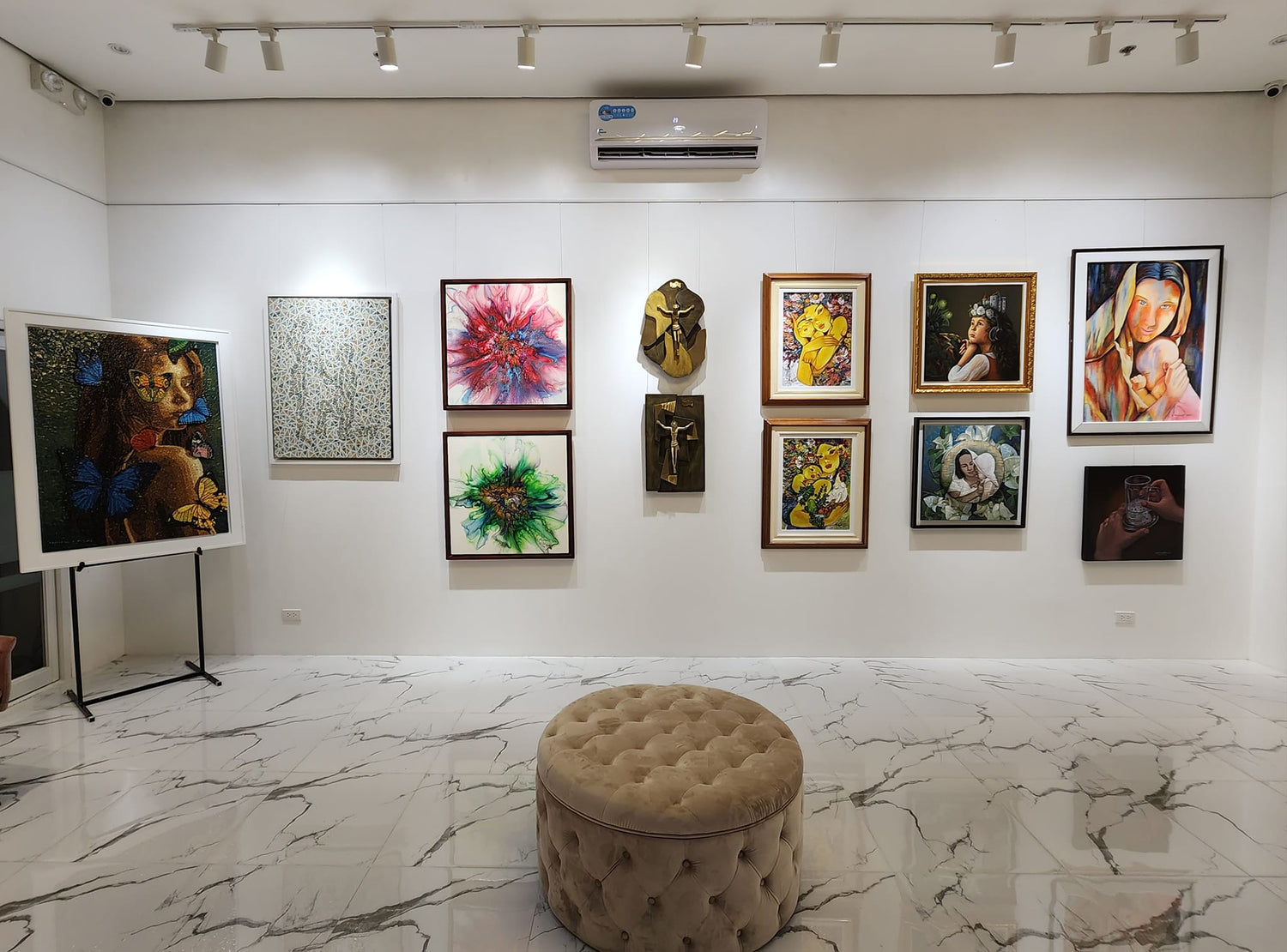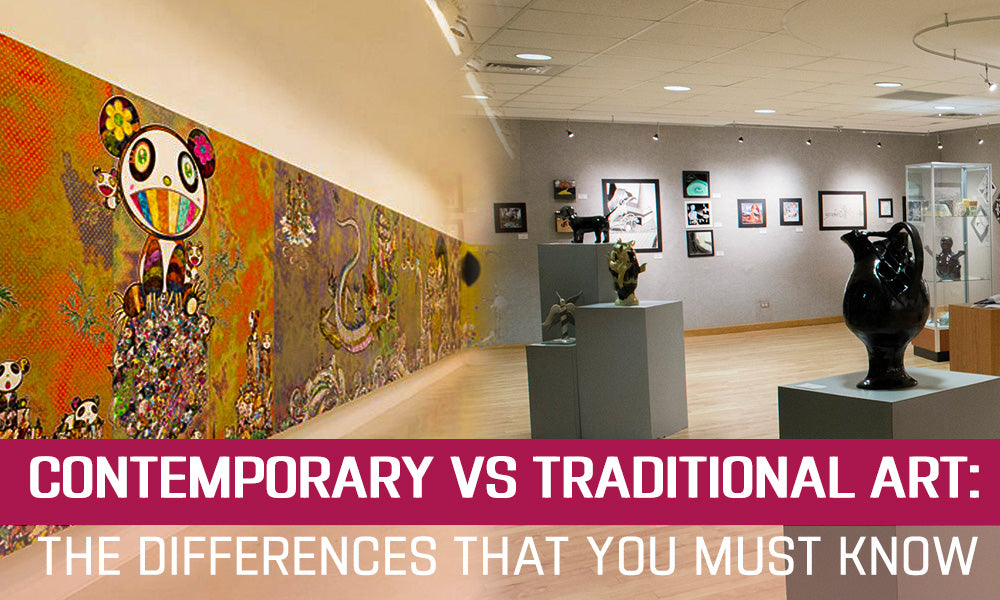Contemporary vs Traditional Art: The Differences that You Must Know
Art has always been a creative expression of one’s ideas and imaginations through the ages. The oldest known prehistoric art was drawn on a rock thousands of years ago. This indicates how artistic expression has evolved throughout the years. The range of artistic styles in the past until now reflect a particular period like traditional and contemporary arts.
Traditional art and contemporary art are similar as forms of artistic expression used to communicate a message or idea however, they also have key differences which make them distinct from one another. How can someone distinguish one over the other art form? This article shares essential information that compare traditional art and contemporary art in several ways.
6 Distinct Comparisons of Contemporary vs Traditional Art
1. Era
One way for you to distinguish contemporary vs traditional art is by knowing the era. Contemporary art was created from the 1960s through the 1970s and still currently developing while traditional art started in a much earlier period. When talking about Traditional Art, it is often referred to what is called the classical art.
2. Description of the Art Form
Contemporary art represents the art created by people of the present day and of the recent past. Meanwhile, traditional arts embody the historical culture, skills, and knowledge of a group or generation of people. Comparing contemporary vs traditional art must be looked at in terms of how culture is utilized. Contemporary art mirrors the ideas, mediums, and technologies of the present day. Traditional art, on the other hand, is part of the culture of a group of people. The masters handed down their skills and knowledge to their apprentices.
3. Ideas Reflected
Another key difference between contemporary vs traditional art is the ideas held by these two art forms. Contemporary art reflects on society and the important issues during this time with the hope of bringing change to society. Issues raised include environment, feminism, consumerism, globalization, multiculturalism, bio-engineering, and HIV/AIDs awareness, among others. This art form is more socially conscious than any earlier era. An academic research discussed that contemporary art can be a catalyst for social change in a community. The mural paintings influence the community and the social interaction among the people has turned into a movement with an organization. Traditional art reflects ancient ideas, lessons, and themes that are meant to affect the present generation. It does not try to give attention to the materialistic ideas or views. Instead, it is primary concern on how to preserve time-honored skills in a creative form.
4. Primary Focus
Contemporary vs traditional art is differentiated by their main focus. In contemporary art, there are various subjects but no specific subject is explored. Practitioners of contemporary art are free to express themselves. In traditional art, religion and culture are the key subjects. Some cultural artworks in Japan use traditional materials to show their cultural background like the traditional woodblock print method.
5. Materials and Techniques Utilized
Another difference between contemporary vs traditional art is the materials and techniques commonly used. Contemporary artists use various materials and techniques that include new technologies such as computers, three-dimensional, performances, and live elements. Some still use traditional paint and pencils while others use light, sound, photography, and installation to create their artworks. In traditional art, the materials frequently used by artists include paint, pencils, brush, charcoal, clay, plaster, pottery wheel, and palette knife among others. Traditional painting and drawing methods are the common techniques.
6. Examples of Artworks of Contemporary vs Traditional Art
Contemporary art examples include:
- Campbell’s Soup Cans by Andy Warhol (1962)
- The Physical Impossibility of Death in the Mind of Someone Living by Damien Hirst (1991)
- Infinity Mirror Room by Yayoi Kusama (1965)
- Girl with Balloon by Banksy (2002)
- Flower Ball by Takashi Murakami (2002)
- Remembering by Ai Weiwei (2009)
Examples of traditional art include:
- Mona Lisa by Leonardo da Vinci (1503)
- La Pieta by Michelangelo (1498-1499)
- Girl with a Pearl Earring by Johannes Vermeer (1665)
- Triumph of the Immaculate by Paolo de Matteis (1710-1715)
- The Starry Night by Vincent van Gogh (1889)
- The Birth of Venus by Sandro Botticelli (1485–1486)
ALSO READ: 10 Types Of Painting Mediums Used By Different Artists
While they have similarities, there are key differences when you compare traditional art and contemporary art. Their characteristics make them distinct from one another. If you compare contemporary vs traditional art, the era when the art form started played a role in how ideas are developed and mediums and techniques are used. While traditional art followed the rules and traditions founded in classical antiquity, contemporary art is now more socially conscious that the artworks even reflect significant issues of society. There is also technology in that artists create artworks in more innovative ways. But despite the differences between contemporary vs traditional art, people cannot overlook the fact that these two art forms have made significant contributions to the continuous development of art then and now.
Nami Art Gallery houses a curated collection of artworks beautifully created by promising Filipino artists. Whatever style, medium, or subject you are looking for in an art piece, Nami Art Gallery can offer you various interesting selections that will suit your tastes and preferences. Do you want to decorate your home or office with stunning paintings or sculptures? Visit Nami Art Gallery.


